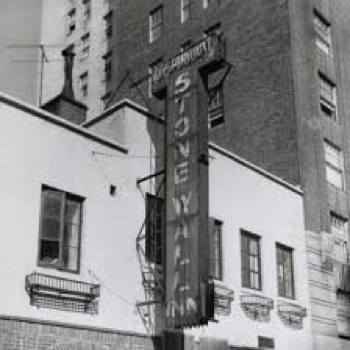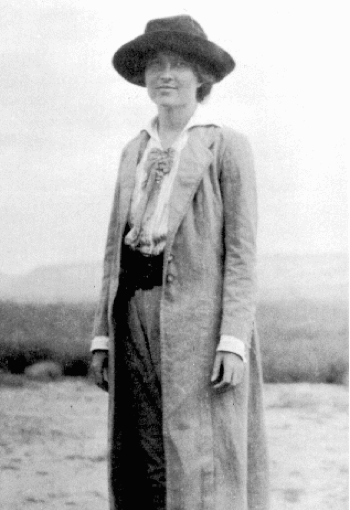Pride in Rye Part Two: Three Women Lead the Way
The Stonewall Inn, Source: NYMag.com
Last week, we sent out a message via our Facebook page, promoting the first-ever Pride Day at Playland Park and reminding readers that this is the 50thanniversary of Stonewall in New York City. We could have stopped there, let the significance of this historic moment pass, and gone on to celebrating more Rye-specific events, but the researcher in me decided to look a bit deeper, beyond the Rye we see on the surface, and connect some dots I’ve been collecting in recent months.
As a start, I looked up the definition of pride from Miriam-Webster: noun: a reasonable and justifiable feeling of being worthwhile; self respect.It is this definition, this careful word choice, that positions Pride Month as an inclusive, celebratory time, an indicator of progress worthy of recognition at amusement parks, in parades, at schools, on flag poles, and on t-shirts and bumper stickers. Pride is positive, it is achievable, it is something everyone deserves to feel. Pride is about identity, respect, growth, and humanity. It is something in which we can all participate and support, for some of us with deep personal connections.
As I followed my meandering path of research and reflection through a Rye lens, the work of three women came to the forefront: Elsie Clews Parsons, Anne Fausto-Sterling, and Genevieve Weber. These women, separated by time and place, but overlapping in their missions and accomplishments, are a part of Rye’s history past and present; theirs are the unknown or little-known stories that enrich our community. These three women are leaders in their fields, trailblazers who have dedicated their life work to understanding gender identity and equity, to the science and social construction of gender, and to the impact society has on people of marginalized identities. One was a member of a prominent Rye family, married to a congressman. One grew up on Kirby Lane North and graduated from Rye High School. The third is a current Rye resident and parent. All three have worked to broaden discussions and shape understanding, to create a world with more possibilities.
Elsie Clews Parsons, Source: City University of New York
The Parsons family was prominent in Rye dating back to the early 1800s. They were merchants, politicians, lawyers and philanthropists who shaped the community and left their mark through various namesakes and institutions. Elsie Clews Parsons, born in 1875 in New York City, held a Masters in Sociology from Columbia when she married Herbert Parsons in her mid-20s. He was building a political career as a progressive Republican representative for New York, and she was working in the world of social reform in New York City at settlement houses. Elsie found that she did not conform to gender norms or societal standards. As a politician’s wife, her pursuit of a career and her autonomy marked her as different. In the field of sociology and social reform, she questioned the boundaries that confined women to work in settlement houses while men could work as university professors and policy makers. Even the women’s colleges, leaders in the women’s movement at the time, approached gender and women’s roles as somewhat separate from men.
Elsie Clews Parsons did not buy into any of these models, and her careful observations as a sociologist provided years of analysis on the intersections of culture, gender and family. She was a prolific writer, and her ideas, which were radical at the time, challenged the gender roles and expectations for both men and women and argued that they were not only arbitrary but stifling. Her writing explored sexuality and how it directly influenced “women’s work,” and she was an early proponent of contraception. Her first book, The Family, was published in 1906. It received enough backlash that Parsons was concerned about the impact on her husband’s career, but rather than discontinue her writing, she wrote her next two books under a male pseudonym, John Main. Her collection of work during these years and later as she grew her career as an anthropologist are now looked at as critical in shaping the fields of gender studies, feminist theory and anthropology. Much of Elsie Clews Parsons’ work did not come to the forefront until much later, after her death in 1941.
Rye in the 1950s and 1960s in many ways embodied the structured society that Parsons challenged in her writing decades earlier. Typical of American suburbs at the time, it was a place where many women chose to stay home and raise families, where discussions of racial inequality, post-war art movements and countercultures were not part of daily life, and traditional definitions of gender, sexuality and family, reinforced in popular culture, thrived. There was one notable exception to this, though, on Kirby Lane North, where an enclave of artists and activists divided up a large, wooded plot of land, built modern homes and raised their families with the progressive ideals filtering out of New York City. This is the environment in which Anne Sterling grew up. It was a tightknit group of families who not only discussed topics of gender and racial inequities but worked passionately to impact change. Earlier this year, I wrote about Anne’s older brother, Peter, and his experience as a Freedom Rider. Anne was still a student at Rye High in the early 1960s, growing discouraged by the racism and injustice she saw in the community following a cross-burning on her family’s yard, a clear sign that their activism was not welcome here.
Dr. Anne Fausto-Sterling, Brown University
For many historians, the June 1969 events at the Stonewall Inn mark the moment when the gay rights movement gained a foothold. At that time, Anne Fausto-Sterling was finishing her PhD in developmental genetics at Brown University, where she continues to work as a professor. Her scientifically-based work in gender studies has informed the nature/nurture debate and she continues to research, write, speak and serve as an expert on the intersections between biology, gender and culture. I grew up in the 1980s and 1990s in a Pennsylvania town much like Rye, and I don’t recall learning about Stonewall until I was a college freshman in 1994. In my first gender studies classes, I was also introduced to Anne Fausto-Sterling’s first book, Myths of Gender. I did not remember her name when her brother Peter first mentioned her nearly 25 years later, and may not have put the pieces together without seeing the book cover on the internet. Remembering those early gender studies classes where I was introduced to historical patterns, culturally-constructed boundaries, emerging research, new vocabulary and a world of possibilities, I remember feeling inspired and reassured. Now I can read Dr. Fausto-Sterling’s work in the New York Times and other publications where she furthers the conversation and challenges binary definitions at a time when LGBTQ+ rights are increasingly under attack.
Dr. Genevieve Weber, Hofstra University
Despite decades of advocacy for marginalized groups, much work remains to be done, and our community today is fortunate to have someone dedicated to the cause, Dr. Genevieve Weber. Dr. Weber, like Elsie Clews Parsons and Anne Fausto-Sterling, found her way to a career in gender and sexuality by identifying a need to improve understanding. Dr. Weber is a professor in the Department of Counseling and Mental Health at Hofstra University, a field she entered many years ago when her research in addiction made her aware of the increased mental health risks for LGBTQ+ youth when certain risk factors, such as family rejection, are present. She is passionate about social equity, exploring how protective factors and risk factors can influence identity development of marginalized groups. Dr. Weber is currently working to have broader impact on college campuses, where she researches how community members (students, faculty, staff) perceive and experience the campus climate. She looks at the intersections of sexual identity, gender and other factors to find and address inequities.
When I recently asked Genevieve to tell me about her current work, she closed by saying, “When we make society more inclusive, challenging gender norms and stereotypes to create a society of possibilities in which people can live authentically, we promote better outcomes in mental health and life in general.” This is what pride is all about.
Going forward, when you think about the history of Pride Month and the current environment, we hope you will think of these innovative women and their work to promote equity. Thank you for learning a bit about Rye’s history and the people who shape our community and our world.
By Alison Relyea
Thank you for visiting the Rye Historical Society’s blog. For more information on sources for this story, please contact us on our website or visit the Square House Museum.




